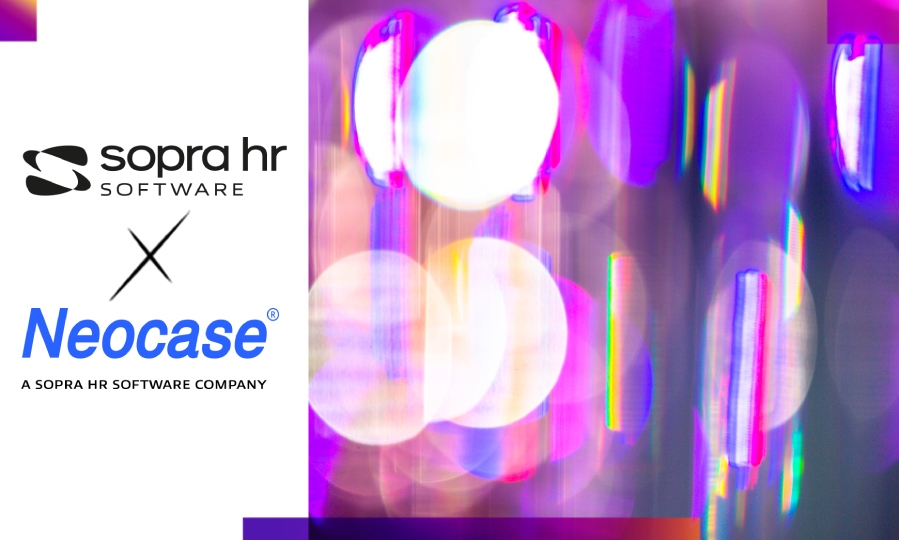IT TRENDS
HR Interoperability: A Pillar of Digital Transformation

SHARE THE ARTICLE ON

Facing the digital transformation of companies, the interoperability of Human Resources Information Systems (HRIS) is not just a technological option but a key factor for fluidity and coherence in the overall management of payroll and HR. Beyond simply connecting tools, it structures how organizations rethink data flows, ensures HR data governance, and enhances the experience offered to employees.
As highlighted by the Sopra HR / Usine Digitale Digital & HR Barometer, “48% of HR Directors in large companies believe that the lack of connection between digital HR tools is an obstacle to the success of their organizations’ digital transformation.”
To avoid information loss or multiple entries, all solutions that make up the company’s HRIS must be able to communicate based on harmonized reference frameworks. Interoperability also concerns information exchanges with the external ecosystem, notably social and institutional organizations, carried out according to strict standards established by the State (for example, the DSN in France). Thus, the HRIS becomes the foundation of a modern HR, capable of meeting both employee expectations and regulatory challenges in a demanding and ever-changing context.
Understanding Interoperability: Definition and Recent Developments
Interoperability refers to the ability of an IT system to interact and exchange data smoothly with other systems, whether similar or different. In HR, it means the HRIS can communicate with both internal applications (finance, general services, time management, etc.) and external systems (recruitment platforms, training organizations, government platforms, etc.).
The evolution of HR environments has seen the rise of “best of breed” architectures, meaning the assembly of specialized solutions for each business need. This specialization has multiplied the number of applications used: it is not uncommon to see up to 20 or 30 HR tools coexisting in a single HRIS, or even more than fifty in some international groups. This complexity imposes a new requirement: ensuring that data circulates without friction and reliably.
In practice, interoperability allows each HR actor to access the right information at the right time, regardless of the channel or application used, which promotes responsiveness and consistency. It is not limited to technical connection; it must address usage, data quality, and regulatory compliance issues, in a context where digital transformation is accelerating and employee expectations are shifting toward greater simplicity and immediacy.
Optimizing HR Efficiency Through Interoperability
One of the major contributions of interoperability is improving the operational efficiency of the HR function. By eliminating redundant tasks and double entries, it allows HR teams to refocus on supervision and analysis. Each action performed in one system can automatically trigger an update in other applications, thus avoiding multiple errors and omissions.
For example, in the onboarding process of a new employee: without interoperability, each department (HR, payroll, IT, training) must enter and validate the same information in different places. This “siloed” operation generates risks of errors, delays, and a degraded experience for the newcomer. Conversely, interoperability overcomes these barriers by facilitating the automatic sharing of essential employee information between various information systems, making a complex process involving multiple actors and systems smoother and more reliable.
According to the Sopra HR/Usine Digitale barometer, “more than 70% of HR tasks are still administrative,” but the automation made possible by interoperability represents, in the long term, a valuable source of efficiency for the HR function.
User Experience and Adoption: A Key HRIS Issue
Interoperability is not limited to optimizing internal processes; it is also a determining factor in user experience, for both employees and managers. The proliferation of “best of breed” solutions has made the HR environment more complex. Users, accustomed to very intuitive and interconnected applications in their daily lives, often struggle to adopt HR tools due to access, navigation, and overall experience issues. These obstacles can seriously harm their perception of the real benefits offered by these solutions and affect their view of their employer.
To maximize adoption and the effectiveness of solutions, it is essential to offer a smooth experience, where access to different HR tools is frictionless. Implementing a single sign-on (SSO) system is a notable advance: a single login gives access to the entire HR ecosystem, greatly simplifying the user journey. Similarly, a unified, customizable HR portal centralizes processes and directs each employee to relevant features and information.
Interoperability and Regulatory Compliance: Securing the HR Ecosystem
In a complex and evolving regulatory environment, HRIS must integrate new standards (social, tax, GDPR, etc.) and ensure that personal data is processed securely and in compliance with legal requirements. Interoperability plays a catalytic role here: it ensures the consistency and traceability of information exchanged with state administrative systems and external organizations.
Given the rapid evolution of standards, it is no longer enough to monitor regulations: HRIS must now exchange directly with state administrative systems to guarantee optimal compliance.
These exchanges, carried out according to strict standards, lead to better HR data quality. They also guarantee that information about employees, transmitted to official platforms, is reliable and regularly updated. Mastery of information flows and their compliance are thus strengthened, limiting the risk of negative audits or sanctions, while protecting the organization’s reputation.
An interoperable HR ecosystem also facilitates access rights management and data governance, aspects increasingly monitored by regulators and stakeholders.
Reliability, Security, and Data Quality: Concrete Benefits
Automated exchanges eliminate duplicates, reduce human errors, and ensure that each piece of information circulates coherently throughout the application landscape.
As indicated by the Think Tank Infinity of Sopra HR Software: “HR departments have access to a lot of internal and external data, often highly confidential. The utmost rigor is therefore required in collecting, processing, and storing this information.”
— White Paper “When AI Comes to the HR Table”
Interoperability, supported by robust security mechanisms (encryption, access control, traceability), becomes a guarantee for protecting sensitive data. It reduces exposure risks during information transfers, which is vital in the era of remote work and increased mobility.
The contribution of AI further strengthens this foundation by enabling intelligent management of information flows and ensuring overall HR data consistency. This paves the way for new, more personalized services and even stricter data governance.
Paving the Way for Augmented HR
By facilitating exchanges between specialized solutions and ensuring data quality, interoperability establishes itself as the foundation of a modern, fluid, and connected HR function.
The benefits are tangible: reduced administrative delays, increased reliability, strengthened compliance, easier adoption thanks to a smooth user experience. Information is consistent, consolidated, and secure.
Moreover, with the intensification of AI usage, mastering HRIS architecture will be an essential prerequisite for fully achieving the goal of “augmented HR,” able to rely on reliable HR data to meet future challenges.
Organizations that embark on this path will have a head start in building the HR of tomorrow.




